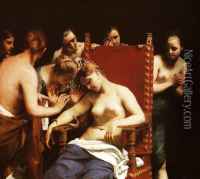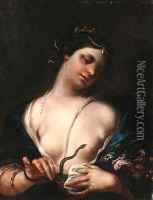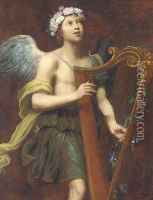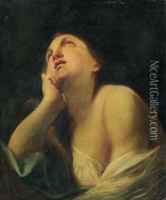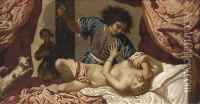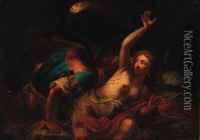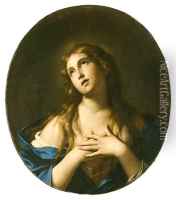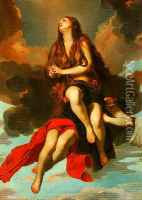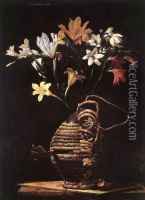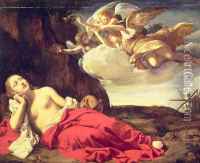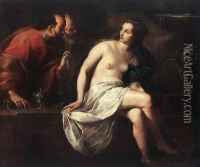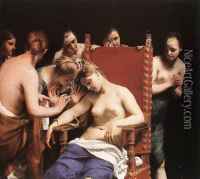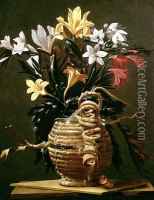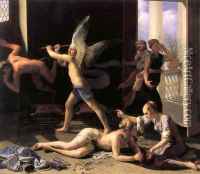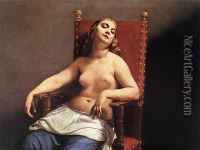Guido Cagnacci Paintings
Guido Cagnacci was an Italian painter associated with the Baroque period, born in Santarcangelo di Romagna, near Rimini, in 1601. He is known for his sensuous and often erotically charged works, which were characterized by a unique blend of realism and idealism. Cagnacci's style was influenced by various artists, including Ludovico Carracci and Guido Reni, among others, but his work also displayed a distinct personal touch that set him apart.
Cagnacci initially trained in Bologna but eventually moved to Rome, where he was exposed to the rich art scene of the time. He assimilated the Caravaggesque style, which was prevalent in Roman art circles, adopting the dramatic chiaroscuro and naturalistic details for which Caravaggio was known. Despite these influences, Cagnacci's work remained idiosyncratic, with an emphasis on ornate costumes, detailed drapery, and the beauty of the female form.
Throughout his career, Cagnacci worked on various religious and mythological subjects, often imbuing them with a sensual and sometimes controversial approach. One of his most famous works, 'The Death of Cleopatra,' showcases his ability to portray emotional intensity and his skill in rendering the human body. The painting's depiction of the fallen queen is both tragic and sensuously appealing, a combination that is emblematic of Cagnacci's artistic legacy.
Cagnacci's work was appreciated in his time, and he received commissions from prominent patrons, but after his death in 1663, his fame diminished and he was largely forgotten by the art world. It was not until the 20th century that his work was reevaluated, and he began to be recognized as an important figure in Baroque painting. Today, Cagnacci is appreciated for his mastery of form and color, as well as for the distinctively passionate and intimate qualities of his art.
